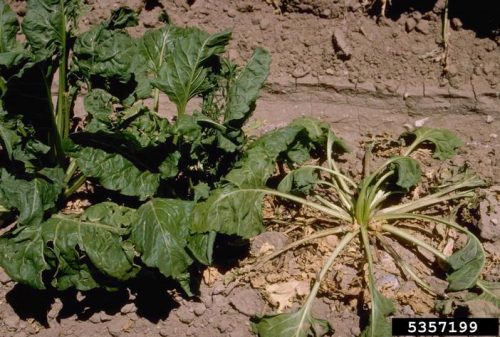Rhizoctonia is a soil fungus that causes a wide range of plant diseases.
Also known as:
Br
Black scurf (potatoes)
Root rot (beets)
Belly rot (cu
Tulip bulb rot
Rhizoctonia spp. is a soil fungus that causes a wide range of plant diseases. Spores of the fungus survive in the soil and on dead plant parts. Most damage to potato plants occurs when temperatures remain below 10°C for a considerable time: because it takes a long time for shoots to emerge above ground, the fast-growing fungus has ample opportunity to infect the above-ground parts.
Plants wilt, leaves die, and brown or black spots appear on the roots.
Rhizoctonia occurs mainly on light soils.
Where to find
- Potato
- (sugar)beet
- Bulbs
- Dahlia
- Cucumber
Control
Damage to plants is unfortunately irreversible, remove affected plants. Control is not possible.
Prevention
Wide crop rotation (> 4 years in the same spot) helps prevent infestation. Pre-sprouting potatoes also helps, as does using healthy seed potatoes.
There are beet varieties that are somewhat resistant. Rhizoctonia is a fungus that mainly affects weakened plants; a healthy, optimal culture (high pH, good drainage and loose soil structure) prevents infestation.
Growing cruciferous green manures like sweet clover (Melilotus) and Hairy vetch (Vicia sativa), improves soil structure and helps prevent infestation.

